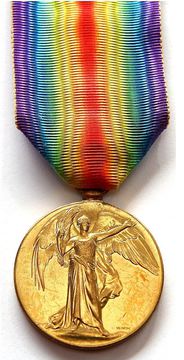
84852
SANDERS, Raymond Charles
| Service Number: | 2475 |
|---|---|
| Enlisted: | 21 June 1916, He enlisted into the army - Carla Vernillo |
| Last Rank: | Sapper |
| Last Unit: | 5th Pioneer Battalion |
| Born: | Norwood, South Australia, Australia , 1895 |
| Home Town: | Not yet discovered |
| Schooling: | Not yet discovered |
| Occupation: | Student |
| Died: | Adelaide, South Australia , 31 July 1989, cause of death not yet discovered |
| Cemetery: |
Centennial Park Cemetery, South Australia |
| Memorials: | Adelaide High School Great War Honour Board, Adelaide University of Adelaide WW1 Honour Roll, Norwood Primary School Honour Board |
World War 1 Service
| 21 Jun 1916: | Enlisted AIF WW1, Private, He enlisted into the army - Carla Vernillo | |
|---|---|---|
| 14 Aug 1916: | Involvement Private, 2475, 5th Pioneer Battalion, --- :embarkation_roll: roll_number: '5' embarkation_place: Adelaide embarkation_ship: HMAT Itria embarkation_ship_number: A53 public_note: '' | |
| 14 Aug 1916: | Embarked Private, 2475, 5th Pioneer Battalion, HMAT Itria, Adelaide | |
| 11 Nov 1918: | Involvement Sapper, 2475 | |
| 25 Mar 1919: | Discharged AIF WW1, Sapper, 2475, Raymond Charles Sanders Returned to Australia - Carla Vernillo |
Help us honour Raymond Charles Sanders's service by contributing information, stories, and images so that they can be preserved for future generations.
Add my storyBiography contributed by St Ignatius' College
Raymond Charles Sanders was born in Norwood, South Australia in 1895. Before he enlisted in World War 1, he was single, with no children and was studying engineering. Raymond enlisted in the Australian Imperial Force (AIF) on 26 June 1916, and was assigned to the 5th Pioneer Battalion, Reinforcement 4. He was given the rank of private, which was the lowest ranking in the army, and was assigned the service number 2475. In 1918, he progressed to the role of a Sapper.
The 5th Pioneer Battalion was an Australian infantry and light engineer unit which had been established in Egypt in March 1916, when the AIF was expanded in preparation for deployment to Europe. The Battalion served with the 5th Division on the Western Front, in most major battles fought in France and Belgium between 1916 and 1918.
Raymond’s war journey began nearly two months after enlisting. He embarked from Adelaide on 14 August 1916 with his Unit aboard the transport ship, HMAT A55 Itria. The ship traveled to Egypt.
Pioneers were trained as infantrymen, but were also given engineering tasks to perform. The troops assigned to the Pioneers required construction and engineering experience in addition to basic soldiering skills. Raymond was studying engineering before his enlistment and therefore he was well suited to the role of a Pioneer. The Pioneer Battalions played an important role in the war as they were needed to improve the conditions found on the Western Front. Without the Pioneers, other branches of the Allied Forces would have found it difficult to cross the muddy and shell-ravaged ground of the Western Front. Their duties included digging and improving trenches for trench soldiers at the front lines, labouring, constructing strong points and light railways, and undertaking battlefield clearance. It has been reported that many of the battalion's recruits were from South Australia, like Raymond.
Other work that the Raymond may have been involved in included the extension of the railway lines that allowed the Allies to bring guns and ammunition up to the front as German forces retreated to the Hindenberg Line. Raymond and the battalion also may have dug defensive mines which were used in the Second Battle of Bullecourt and built plank roads behind the lines at Zillebeke and Hooge, making the roads accessible for artillery and supplies in readiness for the upcoming battles.
On 10 July 1917 Raymond was made a Sapper (another word for an engineer) in the 5th Division’s 14th Field Company of Engineers. While the Armistice was signed on 11 November, the work of the sapper did not finish, as they worked to clear mines and booby traps left by German forces. Many sappers died in performing this dangerous work.
Raymond survived the war and his work after the war as a sapper, returning home on 25 March 1919. He died on 31 July 1989, aged 94. His body was buried at Centennial Park Cemetery.
Raymond was awarded two medals for his service during World War 1. These medals were the Victory Medal and the British War Medal. Raymond was awarded the Victory Medal because the Allied Forces were victorious in winning the War. The British War Medal was awarded for his service during World War 1.











